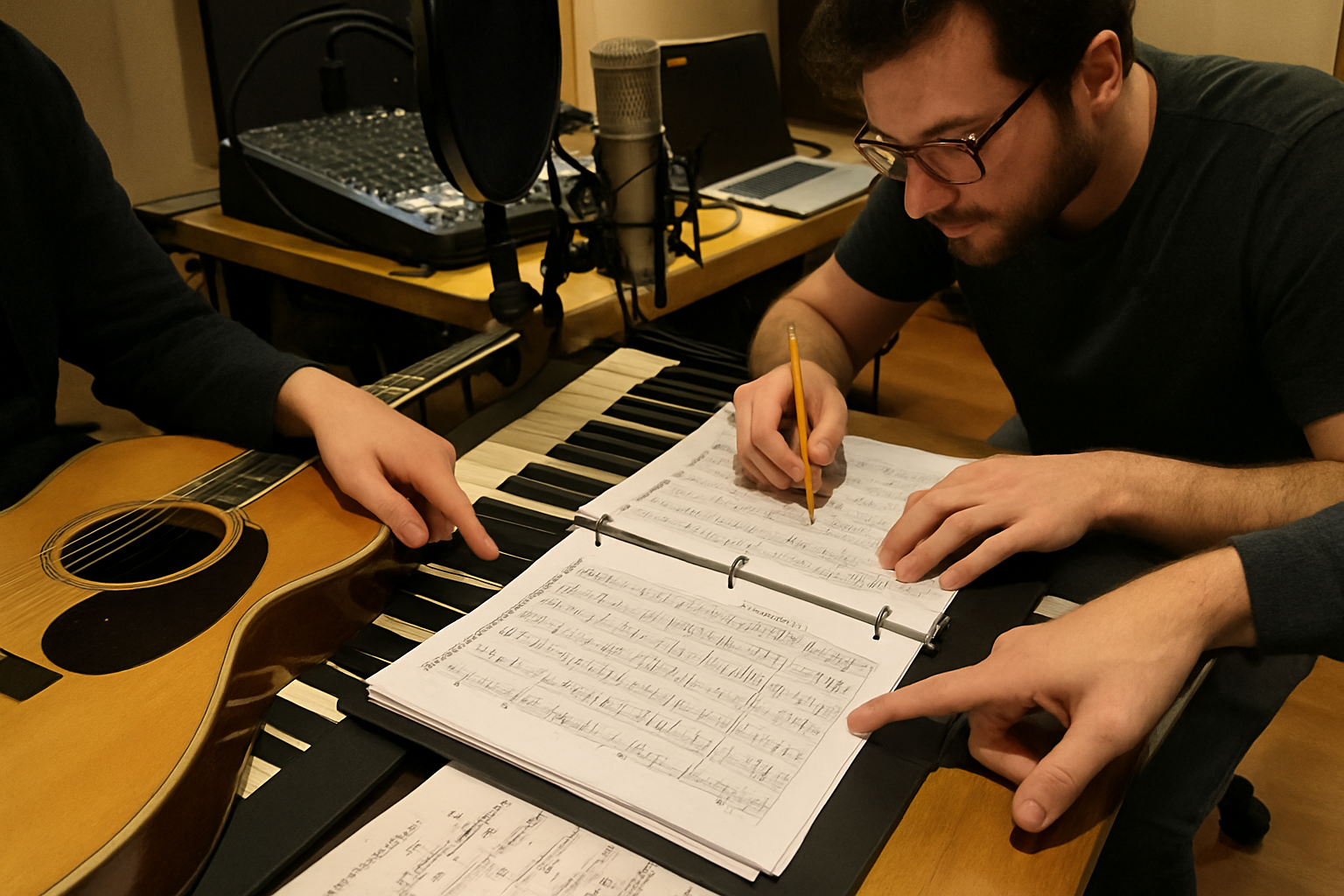Behind the Tracks: The Art of Arranging for Musical Theatre
By Broadwaytrax Content Studio · October 2, 2025
Updated October 2, 2025
In the studio, a composer hums a new melody into their phone. Soon after, a music team takes that idea and shapes it into something a cast can sing, a choreographer can count, and an audience can feel. This process is called arranging.
Many of you are planning new shows and concerts for this season. You need arrangements that fit your cast and match your staging. Arranging connects the needs of the show to the composer’s vision. It transforms a simple piano idea into a full sound that you can trust in rehearsals and performances.
Arranging is not the same as orchestrating, although they work together. Arrangers focus on the song's key, form, groove, harmonies, and how the voices blend. Orchestrators choose specific instruments to play those ideas, like a clarinet’s warm sound or bright brass notes. In many cases, the arranger and orchestrator work closely together. But knowing who is responsible for which part helps keep everything clear.
You also have two key roles in this process. A vocal arranger builds the harmony, tells where to breathe, and aligns the syllables for a big ensemble to sound clean and exciting. A dance music arranger shapes themes for choreography. They create intros, repeats, and flexible sections, allowing the dance to flow without interrupting the music.
“Content dictates form.” — Stephen Sondheim, Finishing the Hat
This principle guides our work. The key and tempo should match the scene. If a character is delicate, you might use a softer sound. If the setting is vibrant, you may want to use brass and percussion. For an example, listen to Hadestown, where each character has a unique sound that enhances their story through its instrumental palette.
So how does a song move from sketch to stage? It begins with a demo or piano-vocal score. The arranger and music director select a key that lets the climax soar without strain. They check the tempo and how it fits with the staging. They also decide on the song's structure. Do we need to cut a verse? Should we add an intro? Next, the orchestrator shapes the instrumentation, whether for live musicians or tracks. Music preparation then turns that plan into clean parts the cast and players can read from the start. In rehearsal, the team makes adjustments and finalizes elements, while the mixer prepares the final sound mix.
In a Broadwaytrax session, we follow a clear workflow. We start with a score audit, comparing the licensed piano-vocal score to the cast album and any orchestral reductions. Next, we align bar counts and test different key options to see how well the melody fits. This fall, many shows are requesting alternate keys. We ensure that if you switch keys, the lighting and blocking don’t have to change.

After that, we set the tempo and feel. We create a precise tempo map with a clear setup for cues. Dance breaks get repeatable sections and two labeled safeties, ensuring everything aligns. This way, the crew and cast communicate effectively during tech.
Vocal arranging brings the music to life. We stack harmonies that suit the style and story. We ensure syllables match across sections and mark cutoffs so everyone breathes simultaneously. A well-organized arrangement helps the music director reassign parts easily.
For realistic orchestration in tracks, we mimic what a live pit orchestra would do. We pay attention to the ranges of instruments and mix the sound so it translates well to an audience.
Here’s a quick look at two examples. In one show, a choreographer needed a longer dance break, but the highlight had to hit the same cue. We created a two-bar groove that could loop, with labeled safety points and a brass shout chorus. The result? The timing matched perfectly every performance.
In a power ballad for two different vocal ranges, we kept the harmonies and timing consistent. We added a short pad earlier in the lower key to keep the excitement without changing the lighting setup.
Good notes and organized files make everything run smoothly. A clear cue sheet with cuts, keys, and stem names will prevent mistakes during tech. Parts should follow standard layout rules, which keeps rehearsals running efficiently.
Custom arrangements help productions shine
Need custom tracks for your show?
Start Your Project TodayPeople matter even more than tools in this work. The arranger, orchestrator, music director, copyist, and mixer all collaborate closely. They share ideas, not just files.
As this season unfolds, remember to keep your arrangements updated. Save versions as the show evolves. Label all files clearly and share updates with the full team. At Broadwaytrax, we strive to let the story take the lead, keep files organized, and provide mixes that fit your needs. This approach gives you a fresh look into the music bench and the talented people shaping what you hear.